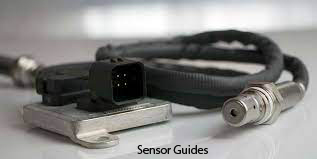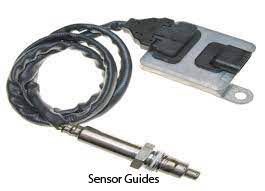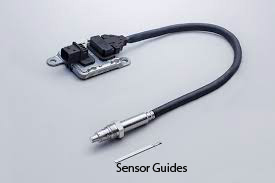Navigating Emission Control: Understanding the NOx Sensor in Your Mercedes-Benz – 2024
Introduction
Mercedes-Benz, which is associated with luxury and performance, also boasts of its environmental responsibility.This dedication is reflected in their vehicles’ advanced emission control systems, which include a crucial component: the NOx sensor.
The Crucial Role of NOx Sensors in Modern Automotive Emission Control
Think of your car as a complicated machine, producing energy continuously to catapult you down the road. Nevertheless, this process is not always clean. Fuel combustion, in particular, the burning of gasoline and diesel, produces pollutant emissions, such as NOx. These gases are responsible for a number of environmental problems such as smog and acid rain.
This is where the NOx sensor comes in. This small and powerful device serves as a watchdog that monitors the exhaust stream for NOx concentrations. It is like a detective, always sniffing out the traces of these dangerous pollutants.

The Specifics of NOx Emissions and the Need for Monitoring
Think of your car as a complicated machine, producing energy continuously to catapult you down the road. Nevertheless, this process is not always clean. Fuel combustion, in particular, the burning of gasoline and diesel, produces pollutant emissions, such as NOx. These gases are responsible for a number of environmental problems such as smog and acid rain.
This is where the NOx sensor comes in. This small and powerful device serves as a watchdog that monitors the exhaust stream for NOx concentrations. It is like a detective, always sniffing out the traces of these dangerous pollutants.
Basics of NOx Sensors: Demystifying the Guardian of Clean Air
We have already discussed in the previous section the importance of NOx sensors in Mercedes-Benz cars.Now, let’s dive deeper into the nitty-gritty of these little guardians of clean air, starting with the culprit they keep in check: nitrogen oxides (NOx).
NOx as a Gas and Its Importance in Emissions.
Visualize a busy street filled with cars that take in oxygen and release a mixture of gases. Included in these exhalations are nitrogen oxides, or NOx, a family of gases that result from the heat of a car engine, where there is too much closeness between nitrogen and oxygen in the air.
Although nitrogen is the primary component in the air that we breathe, the NOx cousins of nitrogen are not as welcoming.These gases contribute to a slew of environmental woes, like:
• Smog city: NOx reacts with the sun and other pollutants to form ozone, an essential component of smog. This annoying mixture can cause respiratory problems and turn city skylines gray and ugly.
• Acid attack: NOx also contributes to acid rain, a watery nemesis that devastates forests, lakes, and even historic structures. Visualize your favorite monument melting away bit by bit – not a pleasant sight.
• Greenhouse gas gang: While not a major greenhouse gas on its own, NOx helps to create other greenhouse gases, indirectly impacting global warming. Consider it the catalyst of the climate crisis.
So, we have to control the NOx and that is where the NOx sensor comes in as a superhero with a gas mask and a degree in chemistry.

How NOx Sensors Detect and Measure Nitrogen Oxides
Imagine a mini Sherlock Holmes inside your car’s exhaust system, always detecting the NOx. In essence, that is what the NOx sensor does.It uses a clever combination of electrical magic and chemical wizardry:
• Electrochemical dance: In the sensor, a ceramic material known as zirconia is the star performer. With the presence of NOx, zirconia conducts electricity in a different way when exposed to exhaust gases. It is like a little dance floor where the presence of NOx affects the electrical flow rhythm.
• Voltage variations: Based on these changes in electrical conductivity, the sensor is able to determine the concentration of NOx in the exhaust. It is similar to translating the zirconia’s electrical language into a language that the car’s computer can read.
Integration with Mercedes-Benz Emission Control Systems
The NOx sensor does not just store the data it gathers in some long-forgotten exhaust-gas diary.It’s actively used by the car’s sophisticated emission control system, like a conductor coordinating an orchestra of emission-reducing technologies:
• Fuel adjustments: The ECU can adjust the fuel mixture and injection timing based on the NOx sensor readings to minimize the formation of NOx. Consider it as tweaking the recipe to produce cleaner exhaust.
• Selective Catalytic Reduction (SCR): SCR technology is used in some Mercedes-Benz models that inject a special liquid called AdBlue into the exhaust stream. This liquid interacts with NOx, converting it into non-toxic water vapor and nitrogen. Think of a magical chemist turning poisonous gases into harmless puffs of air.
Working with these systems, the NOx sensor helps to ensure that your Mercedes-Benz follows strict emission guidelines, while contributing to clean air for all.

Anatomy of a NOx Sensor: Peeking Inside the Clean-Air Champion
Now that you have been introduced to the NOx sensor and know about its noble task, let’s look inside it. Think of looking into a microscopic factory where chemistry and electricity merge to produce clean air – that’s what we are doing here in this section.
Components and Construction: Inside the NOx Sensor
Like any good superhero, the NOx sensor has a well-equipped arsenal:
• Zirconia electrolyte: This star player is a ceramic material that acts as a dance floor for electrons. The dance steps of the sensor change based on the level of NOx, giving it hints.
• Electrodes: These metal plates are partners in the electrical tango, passing the current through the zirconia and recording the changes in its beat.
• Heater: This maintains the zirconia warm and comfortable because its electrical conductivity is temperature-dependent. You can think of it as warming up the dance floor for the best electron flow.
• Housing: This solid shell keeps the fragile internal components from the hostile environment of the exhaust system. It is like an armour for the internal machinery of the sensor.
Placement in the Vehicle: Key Locations for Optimal Monitoring
The location of the NOx sensor is as important as the presence of a good detective at the right place and the right time.In Mercedes-Benz vehicles, there are two main spots where you might find these clean-air champions:
• Pre-catalyst: This position, before the catalytic converter, enables the sensor to determine the NOx concentrations directly from the combustion chamber. It is like checking the villain’s den before they commit their environmental offences.
• Post-catalyst: In this case, the sensor measures the amount of NOx that is left after the work of the catalytic converter. It is like confirming that the villain has been truly eliminated after the intervention of the hero.
The exact location varies by vehicle model and emission control system. Despite its location, the NOx sensor is a critical component in achieving maximum performance with emission compliance.
Differences in NOx Sensor Designs
Not all NOx sensors are the same.Just like superheroes have different powers and gadgets, these tiny guardians of clean air come in various flavors:
• Planar sensors: These have planar zirconia electrolytes and are fairly easy in construction. Imagine them as the regular superhero with simple but powerful gadgets.
• Solid electrolyte sensors: These employ a heavier and stronger zirconia element and have a faster response time. Visualize them as the modern superhero with advanced technology.
The selection of sensor design depends on the type of engine, emission regulations, and desired characteristics. The engineers of Mercedes-Benz choose a suitable sensor for each model of the vehicle to achieve perfect emission control and driving comfort.
Conclusion: Unmasking the NOx Sensor – Your Ally in Clean Air Adventures
In this article, we have traveled to the amazing realm of NOx sensors, which are the silent protectors of the air we breathe, saving it from the villainous clutches of nitrogen oxides. We have discussed their importance for Mercedes-Benz’s clean emission policy, unveiled their functioning, and shed light on their location in your car.
Remember that the NOx sensor is not just a small part – it is a symbol of technological advancement and environmental awareness. When you understand what it does and why, you can see how hard the Mercedes-Benz engineers worked to make cleaner, greener vehicles for a better world.
Frequently Asked Questions about NOx Sensors:
How can I tell that my NOx sensor is bad?
Some of the common symptoms include engine warning lights, poor fuel efficiency, and rough idling. However, in the event of suspicion, visit your authorized Mercedes-Benz service center for the right diagnosis and repair.
How often should I monitor my NOx sensor?
It is also important to carry out regular maintenance as recommended in your car manual. You can also get the information regarding specific inspection intervals for the NOx sensor from your authorized Mercedes-Benz service center.
Can I install the NOx sensor myself?
The replacement of NOx sensor requires specialized tools and technical knowledge. It is very advisable to leave this assignment to the authorized Mercedes-Benz service center for the right installation and execution.
What does it cost to replace a NOx sensor?
The cost is subject to the specific sensor type and labor. Call your authorized Mercedes-Benz service center for proper estimates.
By knowing your NOx sensor and maintaining it, you are not just ensuring performance of your Mercedes-Benz but also contributing to a cleaner environment for all. Do not forget, such small steps can result in big strides towards a greener tomorrow.
